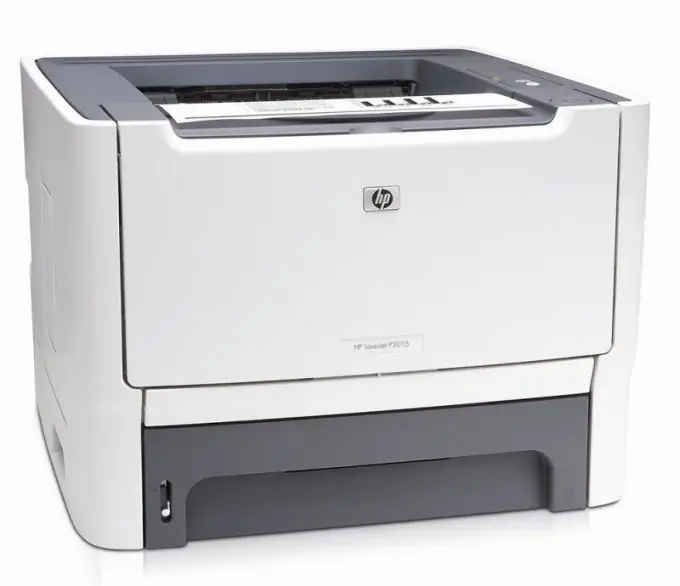Modern office printers have built-in network equipment that allows you to make prints on the printer from all computers on the network that have access. A regular printer must be connected to a computer, and that computer must be turned on in order to be able to print over the network. A network printer does not need a computer and acts as an independent link. To connect to such a printer, you need to know its ip-address.

Necessary
Printer
Instructions
Step 1
Read the instructions for your printer. A conscientious manufacturer will definitely indicate the address of the network card entered by default. If this information is not available in the documentation, print the printer's network setup page.
Step 2
To do this, enter the printer menu through the control buttons and select the PRINT SELF TEST item (or similar). If the printer does not have its own screen, press the printer power button and hold it for five to ten seconds. The page will print automatically. Some printers have buttons that allow you to print a screenshot of the screen, that is, the picture that is shown on the monitor screen at a time. You can use this option to avoid restarting the printer to print the start page.
Step 3
Install the software from the Printer Setting Disc. Typically drives for network printers contain a utility for finding and configuring a printer over the network. Before doing this, make sure the printer is connected to the network. The disk also contains files containing electronic documents with instructions, so carefully read all points. If the printer is connected to one of the computers via a USB interface, then it is useless to search for it on the network by its own ip-address (unless, of course, it has a built-in wi-fi transmitter). In this case, the printer can be accessed via the IP address of the host computer.
Step 4
Despite the difference in price compared to conventional printers, network printers are fully worth the investment. If you have a large office, it makes sense to get a printer that works over the network independently of the host computer. It is also worth noting that ink costs much more for expensive printers than for standard printers.






